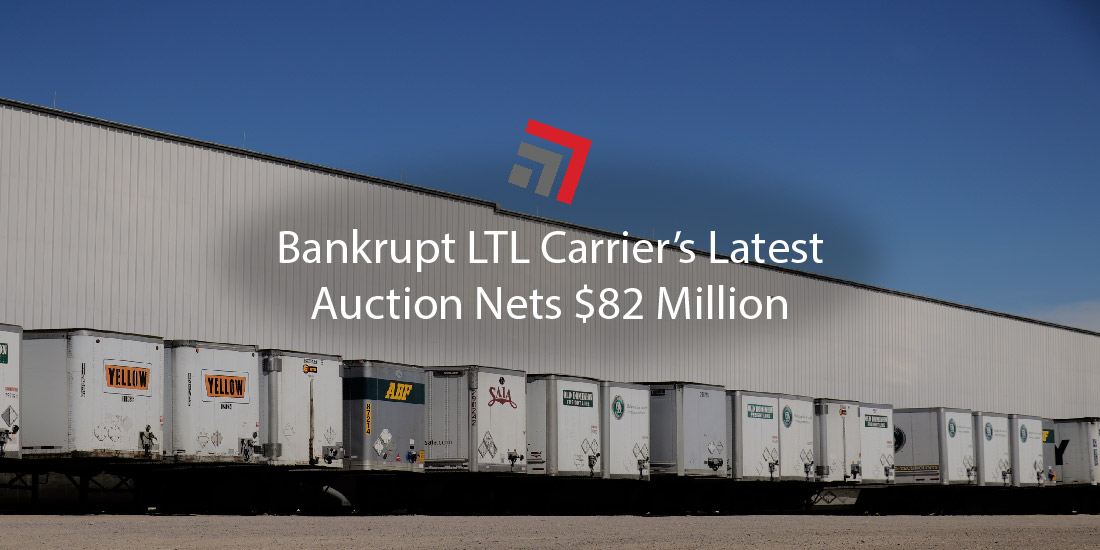In August, an embattled industry giant had finally fallen. Less-than-truckload (LTL) carrier Yellow Corp. filed for bankruptcy, shuttering the firm’s 99-year-old operation. Yellow filed the petition in the U.S. Bankruptcy Court for the District of Delaware under Chapter 11 of the country’s bankruptcy code.
The trucking company’s bankruptcy is the largest filing U.S. trucking history. Yellow had some 30,000 employees, including 22,000 unionized Teamsters.
In the August filing, the company estimated assets of $2.15 billion and liabilities of $2.59 million. Yellow entered a debtor-in-possession (DIP) financing agreement to provide liquidity to sell its assets, pay wages to former employees, and outstanding statements to vendors.
Yellow’s exit has had a tremendous ripple effect across the LTL sector. Back when it was in business, the company was one of the largest LTL providers on the block. However, with Yellow out of the picture, former competitors are situating themselves to capitalize on new business territory left behind. This includes customer demand, but also Yellow’s remnants of assets which the bankrupt company has been bidding out to raise liquidity.
Former competitors purchase Yellow’s assets
This past week, the Delaware district court approved Yellow’s sale of 23 leased shipping terminals for a total of $82.9 million. The aggregate amount is comprised of separate sales to six trucking company-bidders.
Former rival and prominent LTL carrier Estes Express Lines was the largest buyer in this latest round. The company spent $35.3 million on five leased properties. Throughout previous bids for Yellow’s assets, Estes has been a shopaholic, so to speak. The carrier has now purchased 29 properties from Yellow for a total of $248 million. It even proposed $1.525 billion to buy out the entirety of Yellow’s real estate, however the bold move was unsuccessful.
Estes Express will become the new tenant of five terminals located in California, Washington, Nevada, Minnesota, and Kansas.
Next up, FedEx Freight, the largest LTL carrier in the U.S., successfully bought a leased Nevada terminal for $22.47 million. The purchase was the highest of any one terminal available in this round of auction.
Meanwhile, Saia Motor Freight Line inked a deal for the most properties on a single bid. The LTL carrier purchased 11 properties scattered across the Western U.S. for a total of $7.92 million.
Ramar Land Corp. followed with a winning bid of $8.99 million to acquire three terminals.
118 leased properties and 46 owned properties remain on the buying block. The largest facility still up for grabs is a 325-door terminal in Southern California.
The next hearing in Yellow’s saga of bankruptcy proceedings is scheduled this afternoon (2 p.m. EST, Jan. 22).
As Yellow’s former competitors feed on the company’s remaining assets, they’ve also absorbed the ex-LTL carrier’s customer demand since the bankruptcy.
As was the case with all of trucking in 2023, demand in the LTL sector was anemic. The weak market made it a lot easier for other carriers to sweep up lingering volumes left behind from Yellow’s exit. This source of additional freight offered the sector relief from trucking’s overall freight drought.
Final Thoughts
With the latest round of sales complete, Yellow has auctioned off most of its real estate assets. The company now turns its focus towards selling off its vehicle fleet. At the end of Q2 2023, Yellow owned an estimated 12,700 tractors (truck cabs) and 42,000 trailers.
Going forward, the bankrupt LTL carrier will remain in the headlines. Yellow’s descent into closing was perhaps the messiest it could’ve been. The company fired virtually all 30,000 employees, including union-represented ones, over the summer. For most of these workers, their fate was abrupt and mismanaged. As a result, a coalition of ex-Yellow employees have filed a class action lawsuit over the company’s alleged failure to provide sufficient notice to terminated workers.
Contact one of our team members if you have any questions regarding this topic or any others in domestic logistics.
More blogs similar to this:



Recent Comments